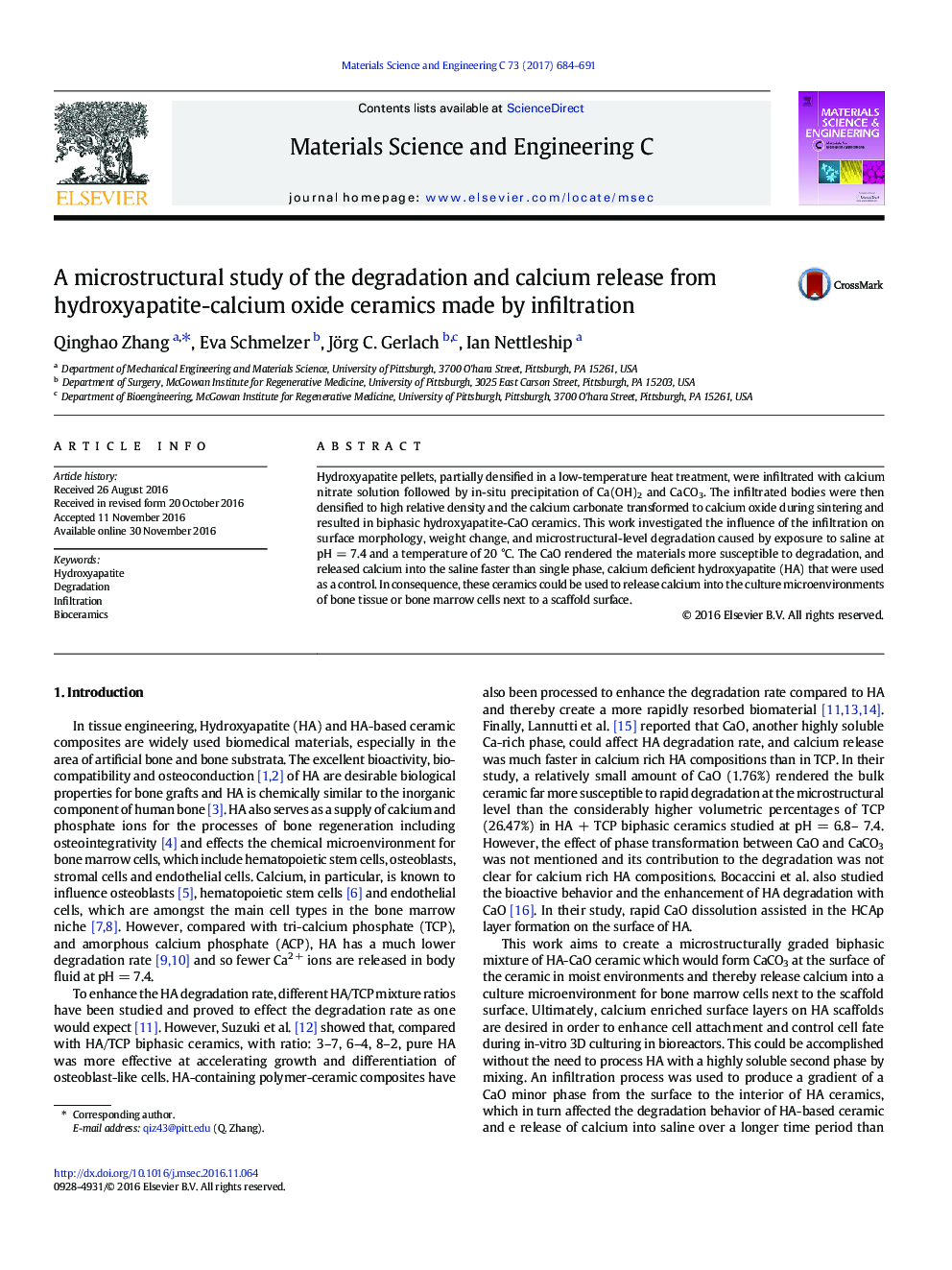| Article ID | Journal | Published Year | Pages | File Type |
|---|---|---|---|---|
| 5434976 | Materials Science and Engineering: C | 2017 | 8 Pages |
Hydroxyapatite pellets, partially densified in a low-temperature heat treatment, were infiltrated with calcium nitrate solution followed by in-situ precipitation of Ca(OH)2 and CaCO3. The infiltrated bodies were then densified to high relative density and the calcium carbonate transformed to calcium oxide during sintering and resulted in biphasic hydroxyapatite-CaO ceramics. This work investigated the influence of the infiltration on surface morphology, weight change, and microstructural-level degradation caused by exposure to saline at pH = 7.4 and a temperature of 20 °C. The CaO rendered the materials more susceptible to degradation, and released calcium into the saline faster than single phase, calcium deficient hydroxyapatite (HA) that were used as a control. In consequence, these ceramics could be used to release calcium into the culture microenvironments of bone tissue or bone marrow cells next to a scaffold surface.
